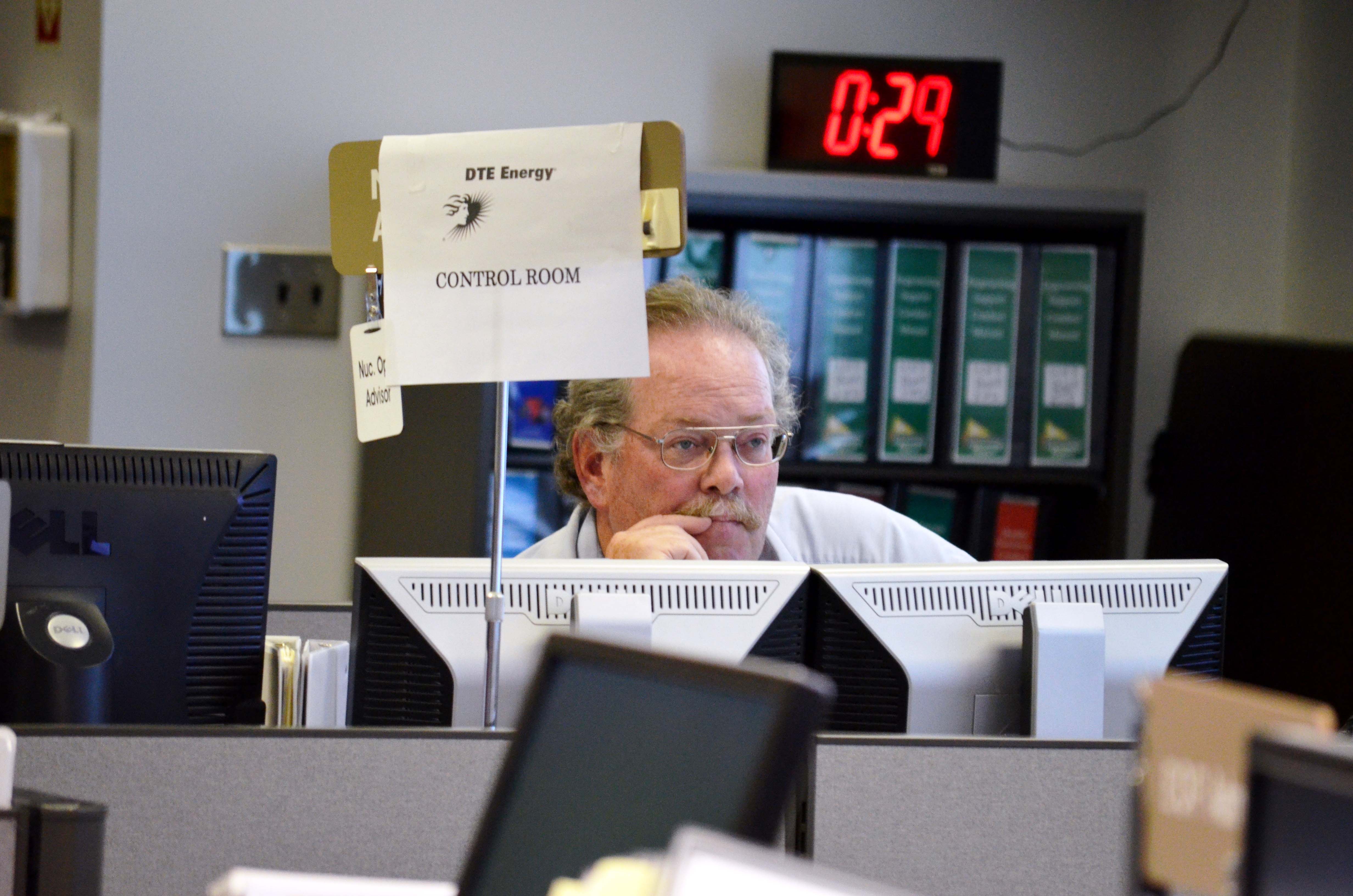As the team determined its next step in its unfolding emergency, an employee made a seemingly sensible suggestion: try to cool the Reactor Building by opening a certain hatch to increase air flow.
The person quickly realized his error: “That’s right, we have no power.”
His realization came several hours into a tabletop exercise at Fermi 2, a Utilities Service Alliance fleet member. This exercise was like no other Fermi 2 had ever conducted — it was training for a beyond-design basis event and preparing for FLEX, the new industrywide initiative in response to Fukushima.
“We don’t usually table-top to this level,” said Mark Kramer, a shift manager at Fermi 2, during the exercise.
The beyond-design basis event is one that all hope never happens.
But in an industry that continually improves and expects the unexpected, it is preparing for it: an event that causes all power sources — off-site and on — to fail. The U.S. nuclear industry — the USA fleet, included — is taking actions to ensure an already safe fleet of plants is made even safer.
“This is our duty, our responsibility to continue with our promise to protect the health and safety of the public,” said Kevin Burke, who is leading the Fukushima response effort at Fermi 2. “It is incumbent upon us to incorporate this new program.”
FLEX is a strategy for adding more backup systems to cool nuclear reactors and used fuel storage pools and to maintain the integrity of reactor containment structures. The focus of the program is to provide an uninterrupted supply of electricity and cooling water that will protect plant safety functions at all times. Phase 2 equipment will be stored in buildings on site and phase 3 equipment can be mobilized from National Response Centers in Phoenix and Memphis.
Plants are incorporating the FLEX strategies based on orders from the Nuclear Regulatory Commission. All USA fleet members aligned planned outage schedules. The First plants will complete actions to become FLEX compliant this fall. This includes USA fleet members D.C. Cook and Salem.
At Fermi, the table top exercise was one step toward full implementation of FLEX.
The scenario for this table top exercise was initiated by a seismic event that disabled all power sources for the plant. That caused a station-wide blackout, while at the same time, the plant’s onsite power generation backups also failed and a loss of the electrical grid also occurred.
The Fermi cross-functional team — from Operations, Engineering, Maintenance, Radiation Protection, Emergency Preparedness, Security and others — gave a detailed explanation of its response to the emergency, based on existing procedures and those being incorporated to fulfill FLEX initiatives.
“When we saw the lights go out, we’d immediately go to the control room,” said one Nuclear Operator.
But what usually is simple became difficult — or at least unclear.
How would they make it through turnstiles with the power cut off? With the plant’s announcement system down due to lack of power, how would any announcements be made; how would they know the reactor shut down? In those first moments, how would Security react, not knowing for certain whether the power outage was weather-related or deliberate sabotage?
For nearly two days, the team continued on this path, documenting the activities of all groups in 10-minute slices, or even more detailed if needed for a particular process.
Most questions had answers, in the form of procedures or official processes. But some didn’t. And that was the point of the exercise, Burke said. Formal action items were created to allow for assessment and action to resolve these questions.
“The reason we are doing this is to get feedback from the groups involved on where we have gaps, on where we can improve,” Burke said. “We’ve worked for years as a Fukushima response team to draft procedures, develop plans, and now we are bringing them to the people who will work those plans.
“We want to know where our gaps are and where we can improve,” he said.
Randy Ebright, Director of Fukushima Response for USA, attended the Fermi 2 tabletop. He said the exercise provided much insight and learning for the plant staff. He said the knowledge is used to further develop procedures, formalize staffing needs, familiarize the site with the FLEX strategy and prepare for an audit by the NRC.
“This allows us to choreograph what we would do in the event of a beyond-design basis event,” he said. “This helps to validate that our plans, procedures and processes are complete and accurate.
All USA sites participate in a very active project team. The team continues to share many deliverables and procedures, have completed a standard design for Spent Fuel Pool Instrumentation and conduct surveillances to ensure that Fukushima response actions are being addressed and that fleet and industry OE is being incorporated.
For example, Fermi recently shared design and vendor information for 480-volt breaker inserts to other USA members. This insert can be used to provide electrical connections to repower plant electrical buses.
“As stations continue their actions to become FLEX compliant, we will continue to promote fleet learning and sharing to benefit all of our fleet and the entire US nuclear industry,” Ebright said.
Burke said called the exercise at Fermi a success “because we were supported by all of the organizations responsible for implementing the plan.”
“The high level of player engagement was a key attribute,” he said.
Additional exercises are planned to validate the final Flex Support Procedures and Emergency Response Plan staffing prior to audit inspections by the NRC, expected in spring 2015.

Mark Kramer, a shift manager at Fermi 2, participates in a table top exercise at the site as part of the industry’s response to Fukushima lessons learned.

Kevin Burke, standing, who is the leading the Fukushima response effort at Fermi 2, oversees a table top exercise at the site.


